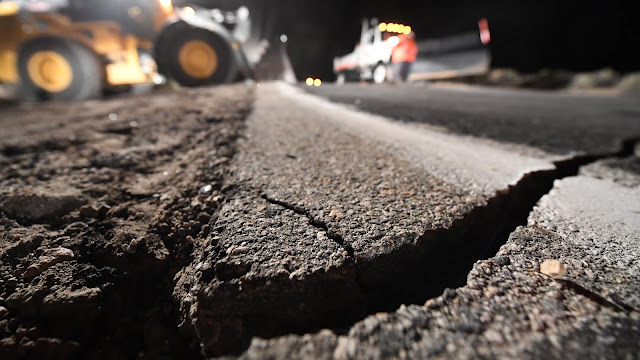Although AI-based earthquake forecasting systems are still in their early stages of development, they can indicate that an earthquake is imminent, having already helped provide more predictions than traditional methods.
Dutch geologist Frank Hogerbitz filled the world with his tweets predicting recent earthquakes, and through his YouTube channel he gave an explanation for further predictions, and after the earthquakes he returned and proudly confirmed that he knew.
Of course, Hogerbitz has caused much fanfare around the world, as there is a consensus among experts that the earthquake is unpredictable before it occurs. In contrast, many researchers have assumed that it might be a finding of something related to "artificial intelligence" through which he was able to figure out what was going to happen beforehand, could artificial intelligence be used to predict earthquakes?
Earthquake forecasting
Earthquake forecasting is a branch of seismology that defines the time, location and size of future earthquakes within clear limits, contrary to a speculation defined as a potential speculation of the overall risk of earthquakes.
Scientists in the 1970s were optimistic that a practical way to predict earthquakes would be found soon, and the few successful claims were controversial.
Indeed, there are various methods of predicting earthquakes, such as observing unusual animal behaviour, measuring changes in the underwater level, oil pressure in oil wells, changes in the Earth's temperature, radon gas leakage from cracks, analysis of shocks or seismic gaps, and the use of potential models based on historical data.
However, none of these methods can accurately determine the date, location and severity of earthquakes, which is why many researchers see artificial intelligence as key to the future of earthquake forecasting worldwide.
How does AI predict earthquakes?
AI technologies can find hidden patterns in data that may help predict earthquakes. Artificial intelligence algorithms can be used to analyze data, identify patterns, detect subtle changes in the Earth's surface, and analyze other data sources that could indicate an impending earthquake.
AI-based models can also use features such as seismic activity, electromagnetic disorders, groundwater changes, etc., to predict the time, location and size of an earthquake.
Models, based on artificial intelligence, can also use small earthquakes and their secondary catalytic effects to track the evolution of the exact field of stress that controls the seismic nucleus.
Machine learning and improved earthquake prediction?
Machine learning is an artificial intelligence branch and allows computers to learn from data, and machine learning algorithms can find hidden patterns or associations in large amounts of data that can be difficult for humans to detect or interpret.
For example, a team of geophysicists applied a machine learning algorithm to the Northwest Pacific earthquakes and successfully predicted laboratory earthquakes. According to a Quanta Magazine report, the algorithm was able to detect patterns with seismic data that could indicate a possible earthquake. The Panel hopes to use the algorithm to predict real earthquakes and help reduce their damage.
A study published by NATURE in August 2021 also discussed how machine learning can help improve earthquake prediction through seismic data analysis.
The study suggests some possible trends for future research, such as developing hybrid models that combine machine learning with a physics-based approach, and exploring causal relationships between seismic variables. It concluded that machine learning has great potential to enhance earthquake forecasting, but also requires careful assessment and interpretation.
Learn the deep machine to detect thousands of hidden earthquakes
Artificial intelligence uses earthquake data to analyze their strength and patterns, which can help predict earthquakes and aftershocks. For example, scientists from Stanford University have developed a system that uses deep machine learning to detect thousands of hidden earthquakes, and this technique uses seismic waves to detect small earthquakes.





Comments
Post a Comment